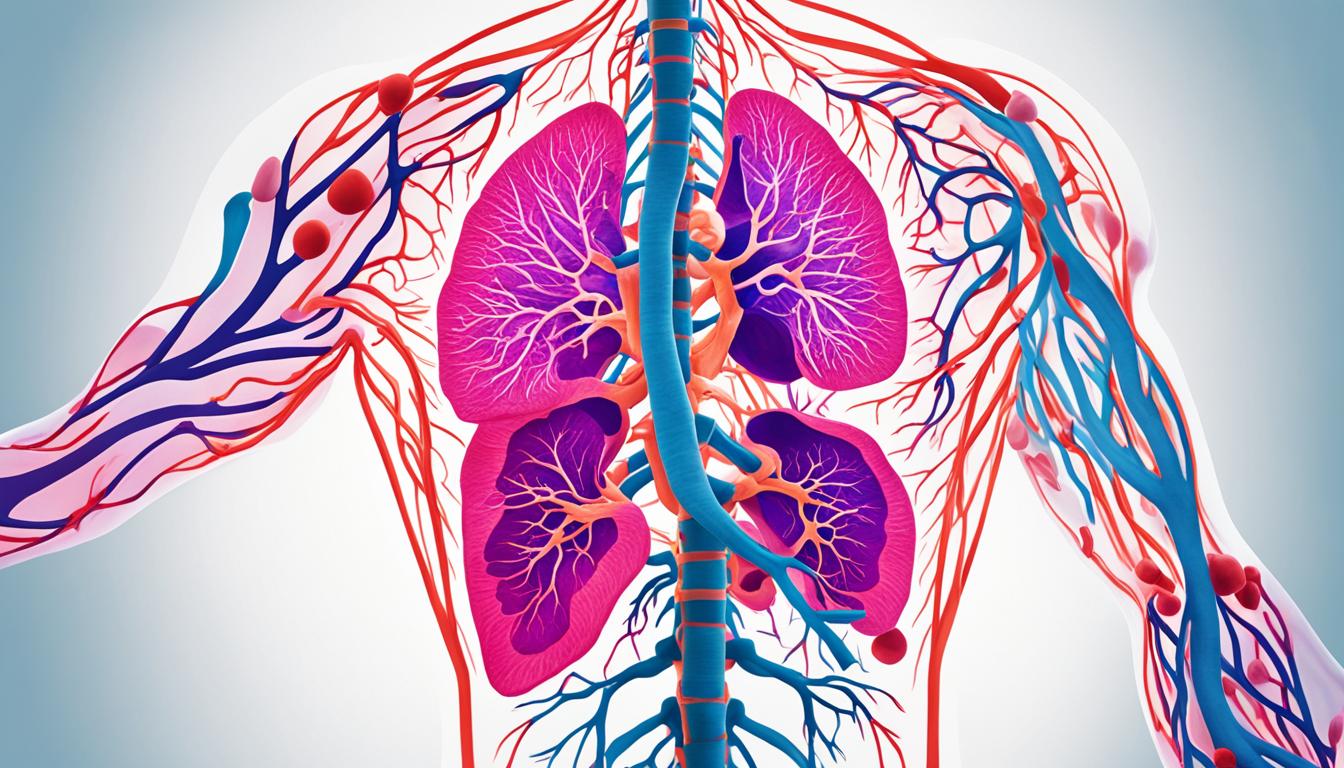Nephrogenic systemic fibrosis (NSF), also known as nephrogenic fibrosing dermopathy (NFD), is a rare disease. It affects people with kidney problems who have had MRIs with gadolinium-based agents. These agents are used to make MRI images clearer. The illness leads to the skin becoming hard and thick, often starting in the arms and legs.
Key Takeaways:
- Nephrogenic systemic fibrosis (NSF) is a rare condition that affects individuals with kidney disease exposed to gadolinium-based contrast agents.
- NSF is characterized by the thickening and hardening of the skin, starting in the extremities and spreading to other body parts.
- GBCA used in MRI is a significant risk factor for developing NSF in individuals with impaired renal function.
- NFS treatment focuses on managing symptoms and slowing disease progression to improve the quality of life.
- Stem cell therapy shows promise as a potential treatment option for NSF.
Risk Factors and Prevention of Nephrogenic Systemic Fibrosis
Nephrogenic systemic fibrosis is rare and linked to gadolinium. It affects those with kidney issues. Having kidney problems, like acute or chronic failure, increases the NFS risk a lot.
People with kidney issues may not clear gadolinium well. This can cause gadolinium to build up in their bodies. Checking a patient’s kidney health before giving GBCA is key, especially with known kidney problems.
The FDA monitors GBCA use closely. They warn about the risks for those with kidney problems. This includes people on dialysis. Doctors should be careful and know these risks well.
Prevention of Nephrogenic Systemic Fibrosis
Preventing NSF is very important for those with kidney problems needing GBCAs. Here are steps healthcare providers can take:
- Check kidney health before GBCA use. This screening helps find those more likely to have issues with gadolinium.
- Look for imaging options that don’t use GBCA. This can reduce the risk for patients.
- If GBCA must be used, consider the patient’s kidney health. Using less can lower the risk of NSF.
- Keep a close watch on patients after GBCA. Regular check-ups help catch possible NSF early.
By following these steps and watching renal health, healthcare providers can lower the NSF risk in people who are most at risk.
Treatment and Management of Nephrogenic Systemic Fibrosis
Treating Nephrogenic Systemic Fibrosis (NSF) focuses on managing symptoms and improving life quality. Currently, there’s no cure for NSF. But, treatments can help lessen symptoms and stop further issues.
Addressing skin fibrosis is an important part of managing NSF. This is when the skin becomes abnormally thick. Doctors may recommend lotions and topical treatments to make the skin softer.
Fixing kidney problems is vital. In serious cases, a kidney transplant might be an option. This can improve kidney function and the person’s overall health.
Managing symptoms is key in NSF care. This includes using medicines, physical therapy, and support to help with joint and muscle problems. These can make a big difference in how well someone moves and does daily activities.
New treatments like stem cell therapy are also being studied. Stem cells can become different types of cells. They may help repair the body. This treatment is not ready yet but shows hope for treating NSF.

